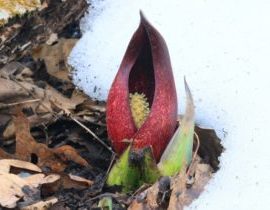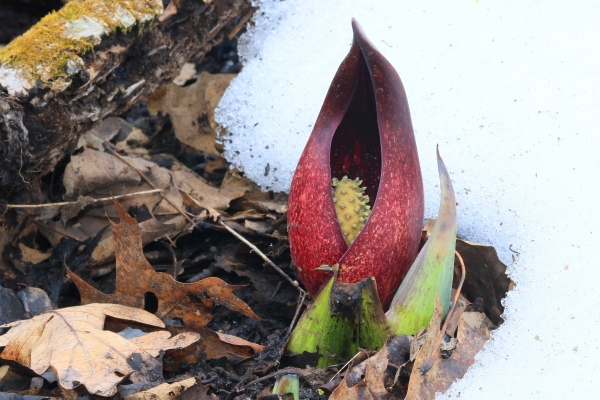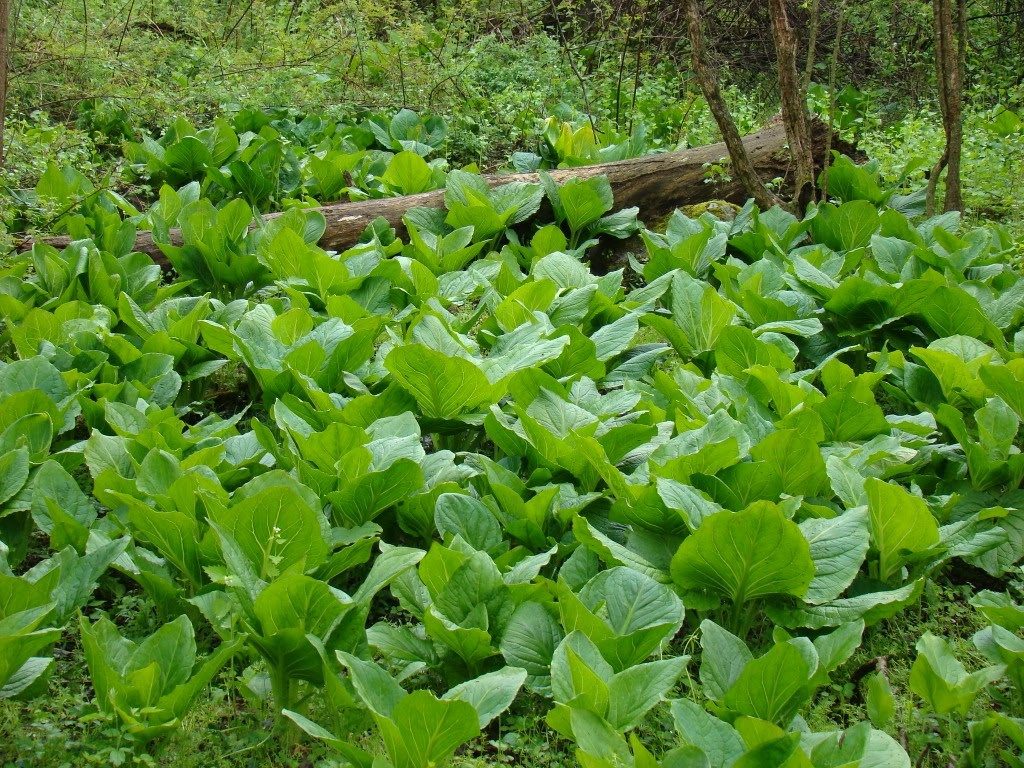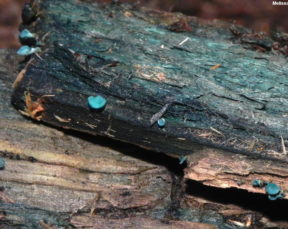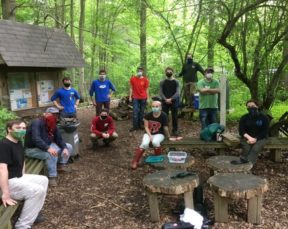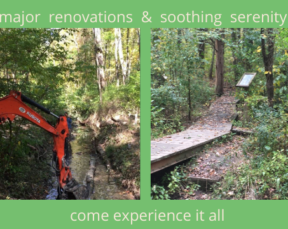Corned beef and… skunk cabbage?
Spring is here, and all about the CMA signs of the coming season are beginning to appear with sproutings of new life. Although we hardly had any snow this winter, there is one plant that is especially adapted to breaking through layers of ice to get to that warm spring sun. Our resident smelly wetland dweller, the skunk cabbage, is blooming now! One of the very first spring arrivals, skunk cabbage (Symplocarpus foetidus) is part of the few thermogenic plants in the world. This means these plants can create their own heat! This nifty trick helps its extremely early blooming flowers melt away any impeding snow or ice and get its stinky flowers pollinated by insects like bees, stoneflies, beetles, and even blow flies. These insects are not normally what you think of as a pollinator – but these little flies and beetles are attracted to that “rotten” smell and heat this flower creates.
As spring progresses, the flowers will disappear giving way to the large elephant-ear like leaves that are prominent in many of the wetter stream sides and wetland areas. Bruising or breaking these leaves can produce their namesake skunk-like smell. Skunk cabbage falls into the family Araceae along with another wetland plant you may be familiar with, Jack-in-the-Pulpit. As well as creating their own heat, many plants in this family contain calcium-oxalate (the same chemical that creates kidney stones in humans) in their structure, usually in the form of a raphide (small double-sided needle-like crystals) which can make them irritatingly toxic and not the type of cabbage you’d want to serve with your corned beef!
Author: Adam Palmer, GSWA Education Associate
GSWA Wetlands Guide will teach you all about the wonderful world of wetland plants and animals. This series will help you better appreciate GSWA’s Conservation Management Area alone or in groups.
